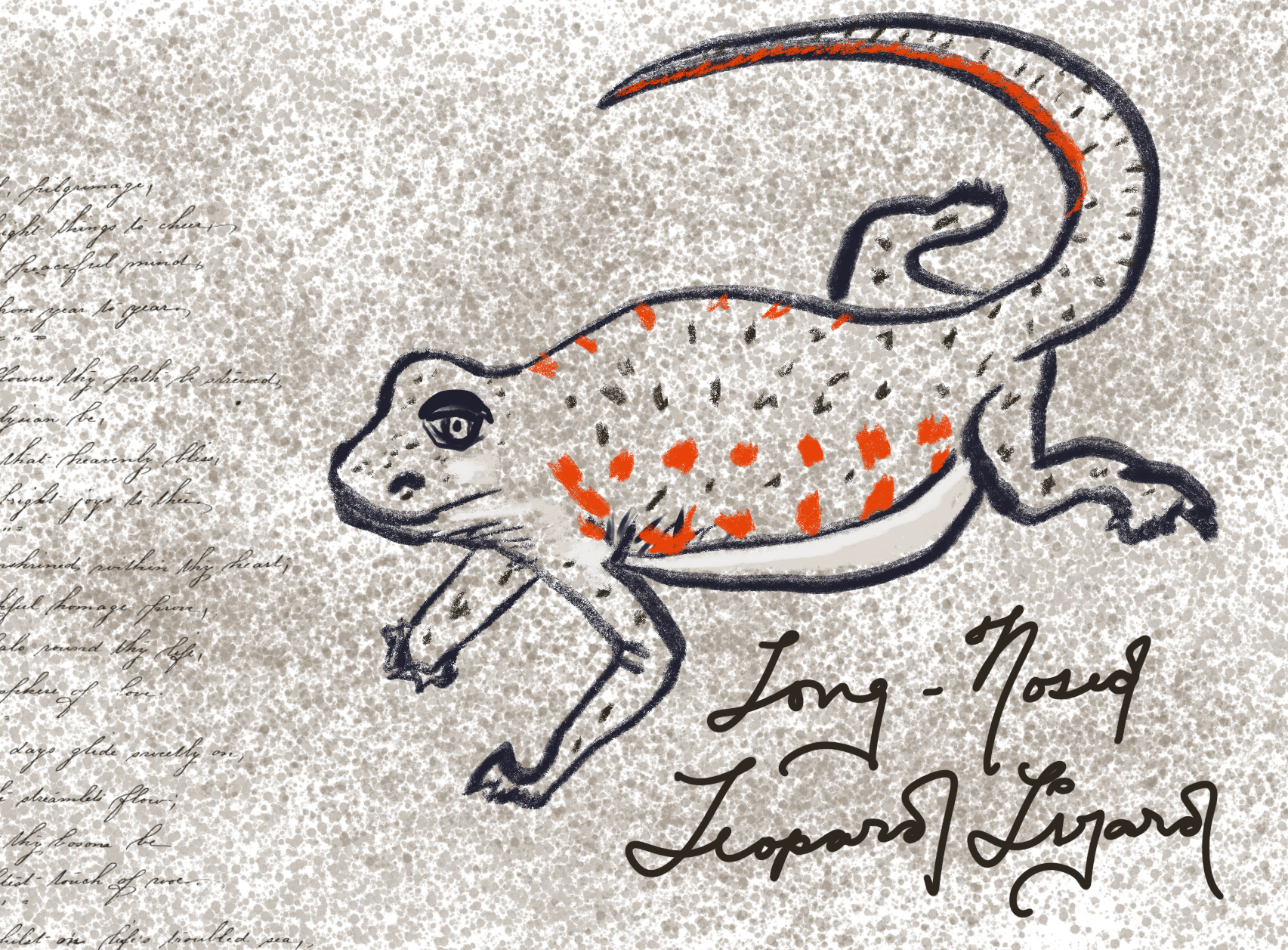104: Long-nosed Leopard Lizard
Today’s animal has a name that is very fun to say. They are one of the largest lizards found in the North American desert, and their presence is an indicator of a healthy desert shrubland environment. They range from western Colorado into eastern Oregon, and down into northern Mexico. A good place to see these fellows would be in the Canyon of the Ancients on the Colorado/Utah border, one of my favorite places in the state. I also learned that there is a Bureau of Land Management designation that I did not know about, despite having worked for them not very far as the crow flies from the area: the Rare Lizard and Snake Wilderness Study Area, established in 1976. One study found that these lizards have a large home range – around 20 ha, or 50 acres – so they are very spread out in the landscape and also can be affected by habitat destruction, especially breaking up of shrublands and sagebrush areas for cattle ranching.
They are fierce ambush hunters who will eat prey – including other lizards – nearly as large as they are themselves. Like other lizards we’ve discussed, they are also speedy at escaping predators, such as birds, coyotes, and snakes, and can detach their tails if caught.
The lizards’ Latin name derives from a German explorer who is best known for travels in Mexico and New Mexico in the mid-19th century, Friedrich Adolph Wislizenus (1810-1889). While traveling with a merchant expedition to Santa Fe, war broke out between the USA and Mexico and he and his compatriots were captured by Mexican troops and detained in a mountain village in Chihuahua where he wrote his memoirs. Presumably at some point in there he also happened to see one of these lizards, who also presumably already had a perfectly acceptable name courtesy of the people who had been seeing them for thousands of years but somehow he wound up with his name on it instead.
I was in a hurry tonight so my sketch for him is a little silly:
